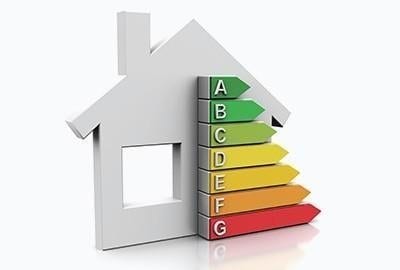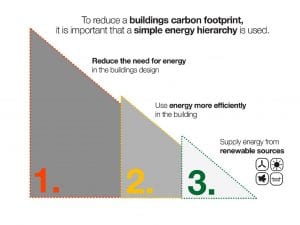
SAP Assessments on the energy and environmental performance of dwellings are currently based on SAP2012 methodology which uses out of date criteria to assess the impact of electric heating on building design. Significant changes to SAP have been published, with the proposed introduction of SAP10 later in 2019/20, which will update this methodology and ensure it reflects the greening of the grid and the growing use of renewable energy.
INTRODUCTION
The Standard Assessment Procedure (SAP) is a UK methodology used to assess and compare the energy and environmental performance of dwellings. The methodology was developed by the Building Research Establishment (BRE) for the former Department of the Environment in 1992, as a tool to help deliver its energy efficiency policies.
SAP works by assessing how much energy a dwelling will consume when delivering a defined level of comfort. The assessment is based on standardised assumptions for occupancy and behaviour. This enables a like-for-like comparison of dwelling performance. Related factors, such as fuel costs and CO2 emissions can be determined from the assessment.
SAP quantifies a dwelling’s performance in terms of:
- energy use per unit floor area
- a fuel-cost-based energy efficiency rating (the SAP Rating) and emissions of CO2 (the Environmental Impact Rating)
- These indicators are based on estimates of annual energy consumption for the provision of space heating, domestic hot water, lighting and ventilation. Other SAP outputs include estimate of appliance energy use, the potential for overheating in summer and the resultant cooling load
- The SAP result is a measure of the actual DER (Dwelling Emissions Rate) against a TER (Target Emissions Rate) expressed as Kg of CO2 per m2 per annum.
SAP has been updated several times since its introduction, and the current standard is SAP2012. It’s a generally effective means of assessing energy and carbon performance of dwellings and enables like-for-like comparisons between properties, but is now out of date in several key areas. SAP2012 will therefore be replaced by SAP10.
WHO NEEDS A SAP ASSESSMENT?
All new dwellings require a SAP Assessment to meet Building Regulations. In addition, it is often the case that conversions, renovations and extensions require a SAP Assessment. (This is something to discuss with your architect who can outline any requirements based on the particulars of your project, noting there are differences in England & Wales, compared with Scotland and N. Ireland depending on local Building Regulations). SAP Assessments are carried out by accredited assessors, who will work from architects plans and construction detail, together with a full HVAC (heating, ventilation and air conditioning) specification.
All domestic and commercial buildings in the UK available to buy or rent must also have an Energy Performance Certificate (EPC). An EPC can be produced by a domestic energy assessor, or by your SAP assessor. This applies an energy performance rating to the property ranked A-G, with A being the highest level. The EPC is calculated using RdSAP, which is a Reduced data SAP, rather than the full SAP used on new build projects. This is a light-tough assessment and as such, may not fully factor the energy efficiency measures you have undertaken.
HOW TO PASS SAP AND COMPLY WITH BUILDING REGULATIONS
Advice would be to engage a SAP assessor early on in the design stage, before submitting a Planning Application. This will help avoid possible issues as the project develops.
We’ve long promoted the fabric-first approach to sound building design, and this is reinforced in SAP. Good building design focuses on:
- Insulation, insulation, insulation… U-values measure insulation effectiveness of building materials therefore approach U-value targets as the threshold to beat, not a minimum level to meet! Always maximise insulation of walls, floors and roofs.
- Heat is lost through windows and doors (even when not open) so aim for the best specification you can afford. Look for products with a U-value of 1.4W/m2 or less.
- Heating control is key: SAP rewards controlled heating systems, and penalises projects that overlook this key element of efficient heating design. It is relatively simple to control individual rooms, and individual heat sources within these rooms, to ensure heat is delivered when and where over time. Herschel iQ controls enable this (enables heating control at the zone, room or individual heater level depending on user requirements), and Herschel iQ controls also include open door/window technology, and adaptive control to further enhance performance, elevate SAP and save on heating costs
- Air-tightness: improved air-tightness reduces heat losses. Beyond good design, you should also ensure attention to detail during construction, so that your investment in good insulation isn’t compromised by poor construction finish and installation standards.

CHANGES TO SAP AND HEATING
Heating is a significant element of SAP, alongside heating controls, so design decisions should be agreed early on in the project lifecycle to ensure compliance.
SAP works on a range of baseline measures, and in the case of heating, mains gas is used as the baseline. In real-terms, using mains gas for heating makes a SAP pass easier at present, because SAP2012 applies lower CO2 emissions from a gas central heating system (216g CO2/kWh) than electric (519g CO2/kWh). However, these emissions factors are out of date, no longer accurate, and are due to be updated in SAP10.
Changes to the electricity related CO2 emissions in SAP10 are significant – reducing from 519g CO2/kWh to 233g CO2/kWh, only slightly higher than mains gas (210g).
Currently SAP2012 assumes any electricity used in the dwelling produces 2.4 times the CO2 emissions of mains gas – this is because it uses an outdated carbon factor which does not reflect the energy mix of the UK grid.
In the UK, there are over 4m households without access to mains gas; over 2m households use electricity for heating. As the electricity grid becomes greener with increased use of renewables, it is inevitable that electric heating will become the cleanest heat source, enabling the move towards zero carbon.
ADDITIONAL MEASURES
Beyond good design and construction standards, one of the simplest additional measures to improve SAP rating is the installation of Solar PV. This is already recognised in SAP2012 and is further refined in SAP10 (to include battery storage and immersion heating with diverted, surplus solar electricity).
Beyond SAP considerations, installing Herschel Infrared alongside Solar PV just makes sense, and running costs are less when you produce your own clean solar electricity, rather than relying solely on the grid. The comment below makes the point brilliantly:
“Using PV + infrared was an obvious combination for us. We have a smart meter and it’s satisfying on a bright winter day to feel the heating panels working with little or no cost registered on the smart meter. We’re really happy with the PV + IR heating combo”
Steve Whitham (Stephen J Whitham Associates) Mar 2018
CONCLUSION
SAP10 is a game changer for electric heating. Because SAP2012 is weighted in favour of mains gas heating, and uses an outdated and inaccurate CO2 factor for grid-supplied electricity, electric heating is essentially penalised. The same project assessed under SAP10 will improve the rating of the dwelling and more accurately reflect the energy and carbon efficiency of your home. Ultimately, homes with a higher SAP rating cost less to live in and SAP10 is likely to elevate electric heating in to the mainstream.
